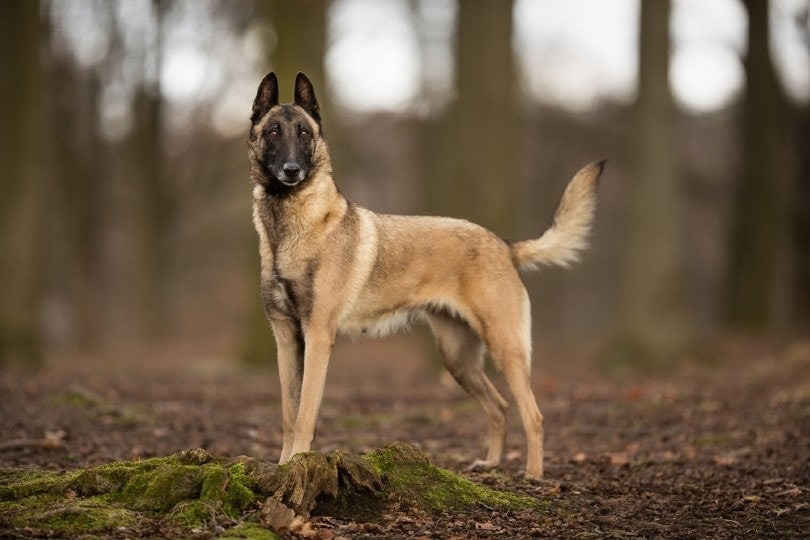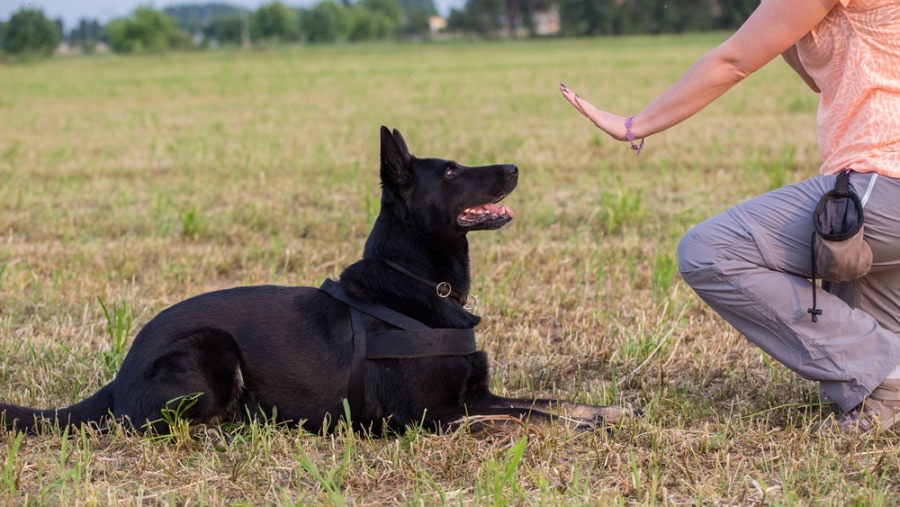How Aggressive Are Shar Peis? Read Before You Get One

Updated on
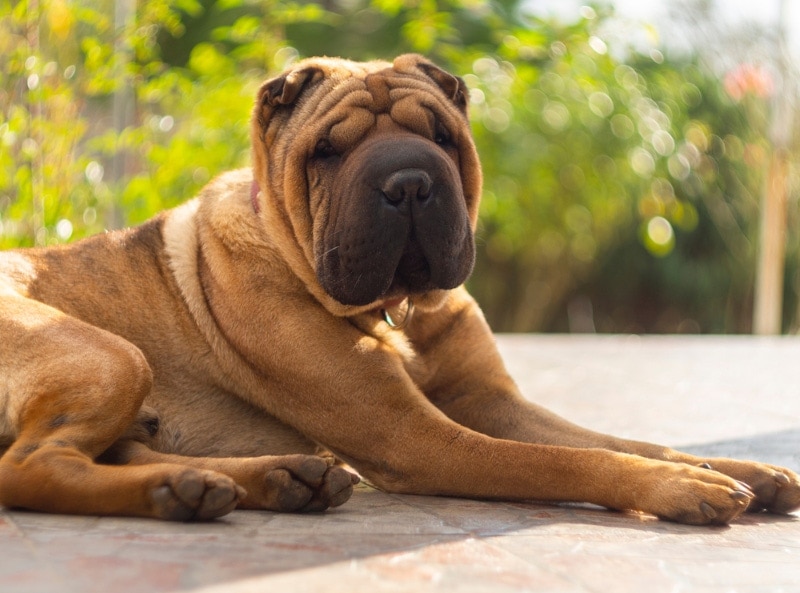
Bred in China to serve as guardians, Shar-Peis are naturally aloof with strangers. When the dog lacks proper training, it grows into a restless and hostile adult. Unsupervised Shar-Peis are extremely territorial, bark at outsiders, and may even bite when provoked. That said, these majestic Chinese dogs also have a sweet and gentle side.
And it’s up to us as the owners to raise our pups properly. Put enough effort into socialization and obedience training, and the Shar-Pei will let its guard down and be more open, trusting, and friendly toward strangers. But just how aggressive do these dogs get? Can they make friends with other pets? How do you train them? Time to find out!
The Shar-Pei Breed: A Quick Look
If you’re looking for a single word to describe the Shar-Pei, that’s going to be “loyalty”. These dogs are praised for their unwavering devotion, independent character, and intelligent minds. In China, they symbolize wealth and prosperity and can be equally great as guardians and companions. Shar-Peis have been around for thousands of years and belong to the non-sporting group.
They’re strong, enduring, and agile for their size. The physical appearance is another thing that makes this breed stand out. We’re talking about the folded skin, tiny ears, blue/black tongue, and the one-of-a-kind muzzle. Shar-Peis look and walk like kings and protect their own with courage and dignity. Taming this ancient beast won’t be easy, though. Let’s talk about that next.

Shar-Pei Personality: Friendly or Hostile?
This might come as a surprise, but the Shar-Pei is a peaceful dog. It likes to spend time indoors as a certified couch potato, dozing off or catching a movie. And, although it’s not a giant, per se, this bud doesn’t like to waste its breath on something unless it absolutely has to. This is something that most guardian dogs do. They conserve their energy for that “killer blow” when there’s a threat around.
So, don’t expect the Shar-Pei to be cute and cuddly with other pups (particularly of the same sex). Instead, it will either try to assert dominance or scare them away. In this valiant protector’s mind, every single stranger is rendered as a foe. And if you’re not there to supervise the interaction, things can get heated in the blink of an eye, especially if that other dog is much smaller than the Shar-Pei,
Here’s what you can expect the Chinese guardian to do:
- Growling (the most common form of aggression)
- Barking (may intensify in the presence of the owner)
- Snapping at the air (this is a warning gesture)
- Lip lifting (a fair warning, a peaceful signal)
- Biting (usually reserved for the very last moment)
- Staring (the “staring game” is practiced by most breeds)
- Blocking entrance (a way to assert dominance)
- Lunging forward (mostly triggered by fear)
Putting Early Socialization to Good Use
With a bold, headstrong, and aggressive beast like the Shar-Pei, socialization needs to start as soon as you adopt the pooch. It’s no secret that most behavioral patterns in dogs develop when they’re still pups. You can begin the “trials” once the pet reaches 2–3 months of age. Do your best to expose it to as much of the outside world as possible. Most importantly, introduce the pup to new faces every day.
The more humans, dogs, cats, and other walking-talking (or barking) creatures it meets, the better. This is a relatively simple process: find a crowded beach or park and take the dog there. Also, let it interact with all your friends, relatives, and family members, including kids. But, again, you have to be there to serve as a supervisor. And you can achieve the best results by doing the following:
- Talk to a vet about the best time to start socialization. The exact age is a bit different for every dog.
- Join a local puppy training class. This way, the dog will have plenty of socialization per day.
- Don’t be afraid to introduce the Shar-Pei to bigger and smaller animals while it’s still a pup.
- Never leave the dog’s sight; always be by its side to provide guidance and avoid trouble.
- Adopt the dog from a shelter or buy it from a breeder who takes proper care of their dogs.
- An early start is, indeed, important, but don’t force anything upon the pup; let it happen naturally.
- Don’t postpone it, either. Dogs that have never been socialized grow into hostile loners.
- Use positive reinforcement (snacks, toys, and words) to steer the dog in the right direction.
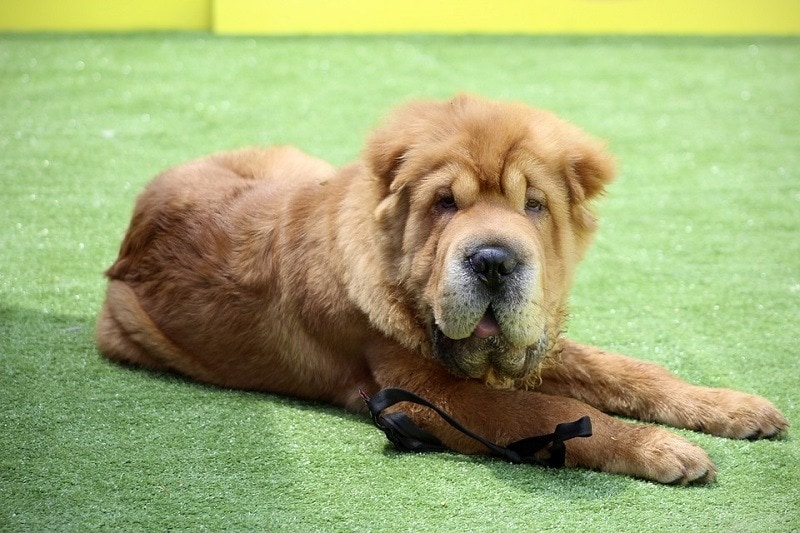
Obedience Training for a Shar-Pei: A Detailed Guide
With socialization, you can “open up” the pup’s eyes and encourage it to learn new tricks, make new friends, and be relaxed and trusting around strangers. But that will do little to discipline the pup. For that, you’ll need quite a few obedience training sessions. Dog experts recommend starting with the most basic, yet essential commands (“come”, “stay”, “sit”, “no”, and “yes”). Shar-Pei dogs have a short attention span, though.
That means the training will only be effective if you keep it short (15 minutes tops). But you shouldn’t change the routine in any way, as that will make it harder for the dog to understand the assignment. Practice patience and a friendly attitude and use positive reinforcement. Never praise the dog for NOT doing what it’s told, though. Make sure it understands that rewards only come from following your lead.
What Exercises Do These Dogs Love the Most?
Dogs like the Shar-Pei like to try new things—that’s how they evolve and stay mentally stimulated. Besides, when there’s little to no physical activity in this dog’s life, it tends to gain extra weight, become anxious, and even develop undesired behaviors. And one more thing: that “sticking to the same old practices” rule doesn’t apply here. Instead, try to keep each day fresh and exciting.
Do that, and the pup will always look forward to the next day; more importantly, you’ll be able to see which types of exercises the four-legged bud prefers. As we mentioned earlier, every single dog is unique and should be treated respectfully. You never know whether it’s a jogger, hunter, or puzzle games fan.

Can Shar-Peis Co-Exist With Felines?
At the heart, the Shar-Pei is a dominant dog with a strong prey drive that’s quick to “bully” bunnies, raccoons, possums, and, of course, cats. Pretty much any small mammal that’s caught by this dog’s radar (i.e. olfactory receptors) will be hunted down. So, if you introduce an adult Shar-Pei to a feline, it will be almost impossible to tame the bigger animal’s natural instincts.
On the bright side, raising them together might help. Start by keeping their bowls, beds, and toys separated to avoid confusion and aggression. Next, let the pets hang out on common grounds while they’re both still in their puppy/kitten stage. This way, you should be able to create a positive image of the cat in the dog’s eyes. Instead of seeing it as food, the pup will acknowledge it as a friend.
Are They Safe Around Children? Is Supervision Required?
The short answer is yes, you must be there every time kids interact with the Shar-Pei. While this dog appreciates the company of humans of all ages and sizes, it will run out of patience at a certain point. This is especially true for kids who don’t know how to play with a pup without confusing or frustrating it. Therefore, even if it’s a short interaction, an adult should always be there for supervision.
Otherwise, the child might provoke the dog by stepping on its tail, playing with its ears, or trying to mount it like a horse. The Shar-Pei will retaliate by growling, barking, and maybe even biting. But you can turn the tide on that by following the same tips that we used for cats. Let the dog interact with your children as a puppy, and it will see the boy/girl as a family member, someone to protect.
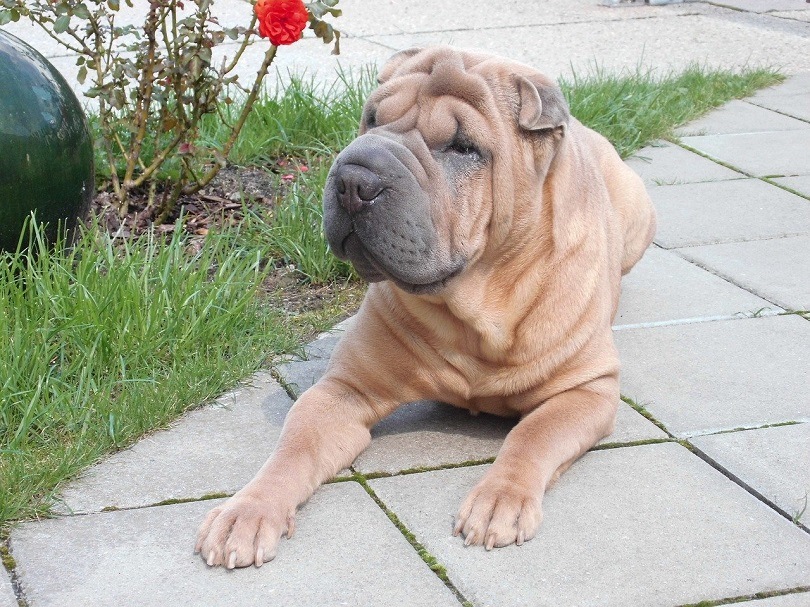
Conclusion
Just like any other breed that’s been on guard duty for countless generations, the Shar-Pei is a natural-born protector. For this reason, it’s territorial, suspicious of strangers, and aggressive toward potential threats. That said, with the right approach, this dog can be a confident and disciplined canine citizen with perfect manners and a friendly attitude.
More good news: the Shar-Pei won’t stop being a fearless protector if you socialize and train it at a young age. Instead, you’ll get an imposing guardian with zero tolerance toward intruders yet a soft side for the people and pets that it knows and trusts. All you have to do is be an assertive yet patient and gentle leader!
Featured Image Credit: Alika Obraz, Shutterstock

